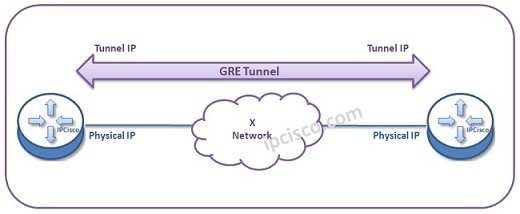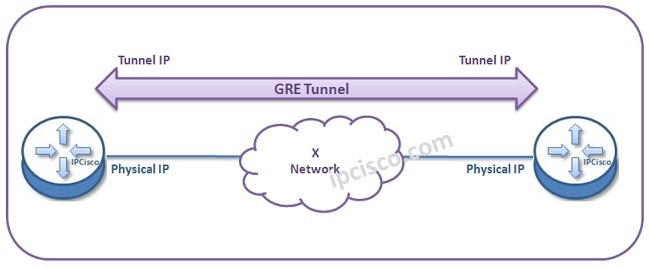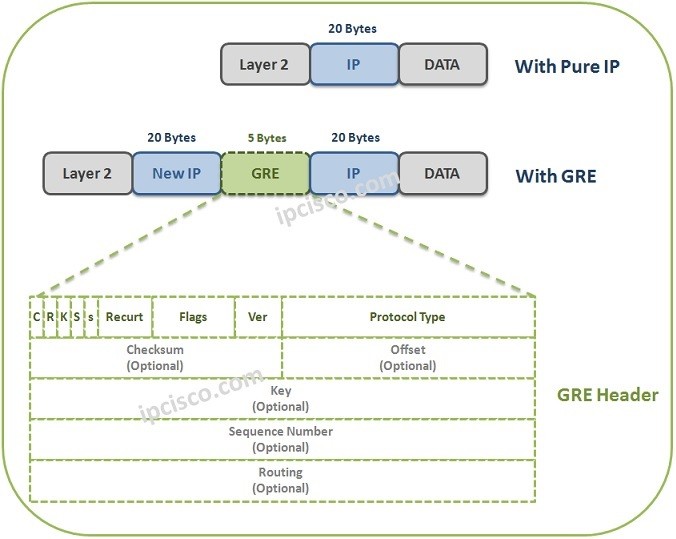- COURSES
- SPECIALS
- BLOG
- MEMBERS
- SHOP
- ABOUT
- ENROLL HERE

Table of Contents
GRE (Generic Routing Encapsulation), GRE Tunnel is the mechanism that encapsulate one protocol in another protocol and provides connection between the nodes. This is done basically IP over IP. A Service Provider Network or Internet is used for GRE (Generic Routing Encapsulation).
GRE provides this communication over a Tunnel. This is called GRE Tunnel. This Tunnel means that there is a transport protocol and a passenger protocol. Tunnel End Points know this passenger protocol but between the end points, the transportation is done with transport protocol.
With these tunnels, a virtual network is built over a public physical network and different branches of the same company, can communicate each other.
You can also check How to Configure Cisco GRE Tunnels on related lesson.
GRE Configuration is a very simple configuration. To configure GRE, we need two routers that we want to communicate. In these routers, firstly, we need to create a Tunnel interface and then we add Tunnel IP Address to this interface. This address will be our Tunnel’s one end IP address. This IP can also be called as passenger IP. After configuring passenger IP, we need to define physical source and destination of our Tunnel. To do this, we will give the real interface IP ’s of Tunnel start and end points.

For Tunnel building, a GRE Header is inserted into the packet. This GRE Header is inserted with new IP Address (Tunnel IP Address) after the IP Header. As you can see below, GRE Header is between two IP Header.

For detailed information about GRE Header, you can check Cisco’s Support Forum.
GRE is used in many networks. Generally we can divide this usage into two. These are:
With MPLS/L3VPN usage provides using GRE Tunnels whenever an MPLS area in the network and you need to link MPLS enabled areas over this non MPLS areas. This GRE usage can be divided into three :

With 6PE/6VPE, GRE can also be used. When a Service Provider has an IPv4 backbone and want to give IPv6 Service over this IPv4 backbone, this Tunnels can be used.


Leave a Reply